Complete Solutions to Exercise1.5 of chapter GEOMETRICAL OPTICS of Class 12 book with complete answers and questions
| Class 12 | PHYSICS |
| Chapter | GEOMETRICAL OPTICS |
| CENGAGE PHYSICS | Exercise1.5 |
| Number Of Questions | 22 |
| Academic Year | 2023-24 |
Identify the statements are True of False.
a. The equation `(mu_(2))/(v)-(mu_(1))/(u)=(mu_(12)-mu_(1))/(R)` is applicabel to a plane surface for `R=oo` .
h. In the above equation, `mu_(1)` is medium in which the object is placed and `mu_(2)` is the medium in which the image is formed.
c. In the figure shown, the real image of object O is formed at a distance `5R` in the medium.
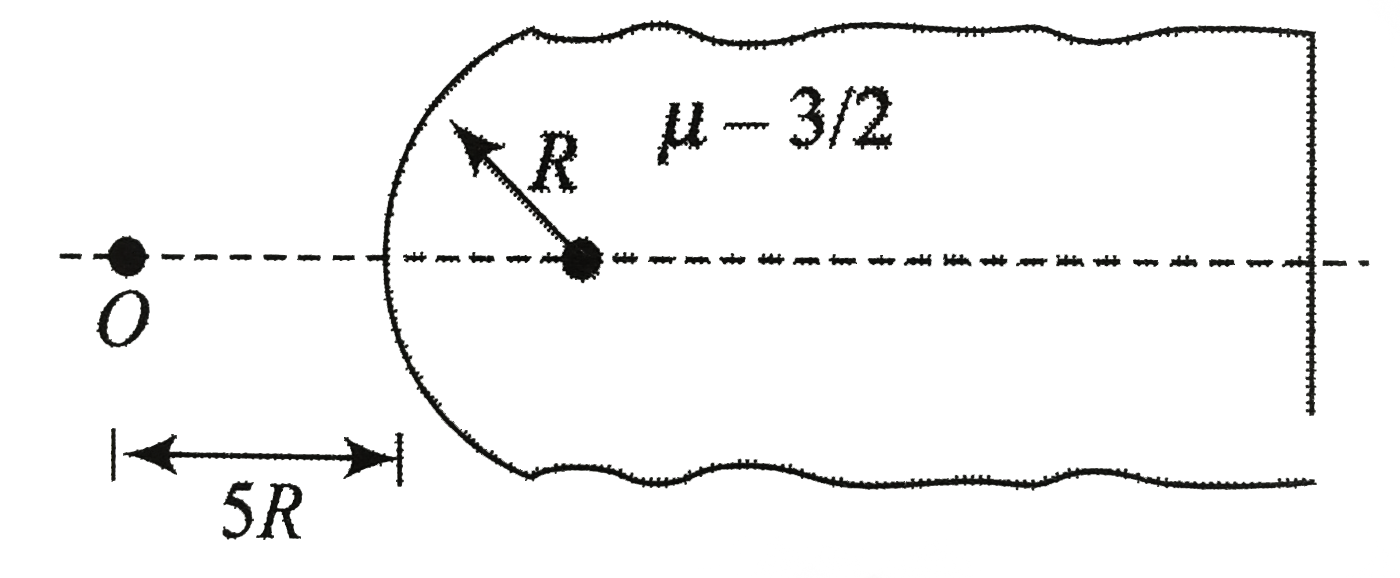
d. In figure, the image of an object O place on the center face of the sphere is formed at infinity,.
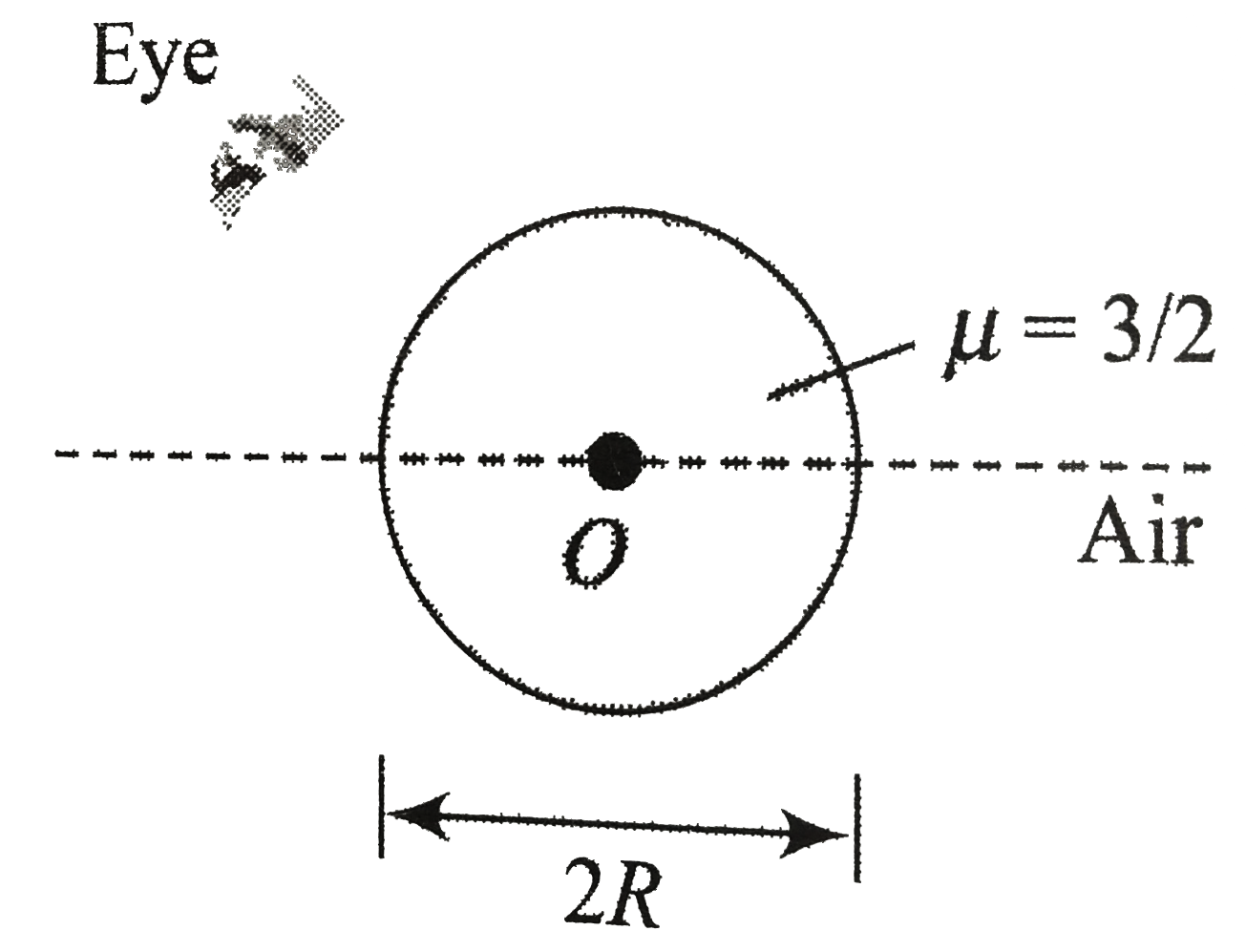
e. In fig , the image of an object O placed on the opposite face of the sphere is foremd at infinity.
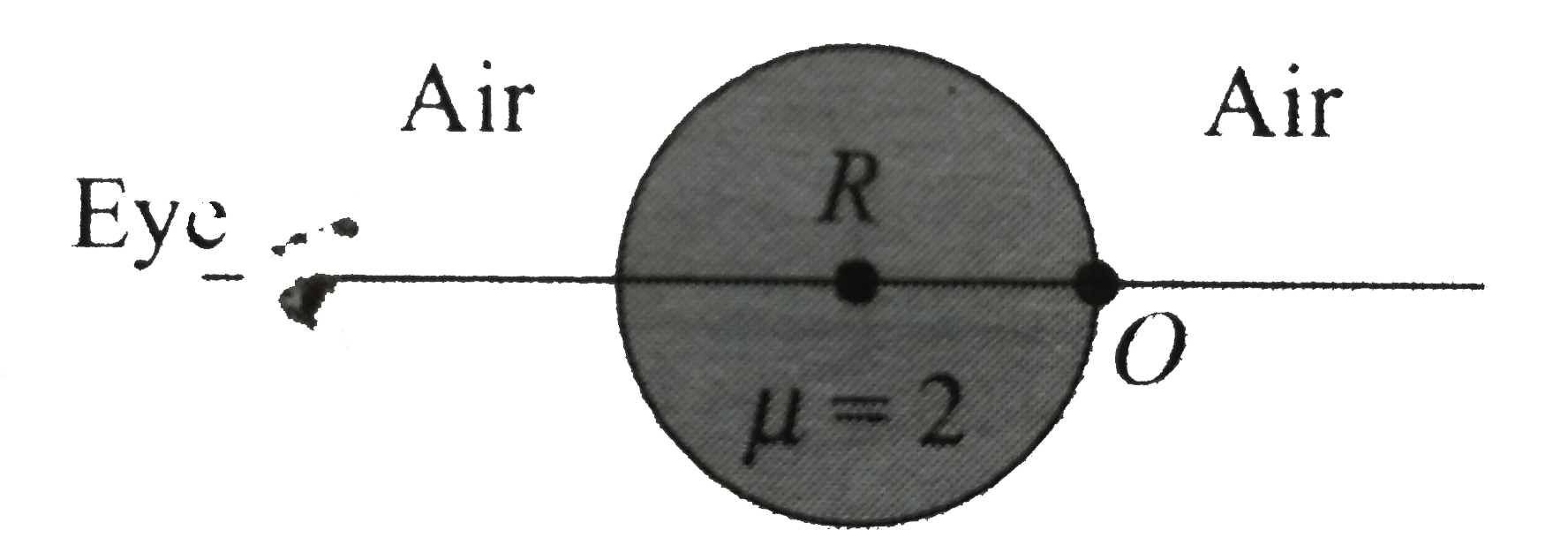
View SolutionOne end of a cylindrical glass rod shown in figure, is ground to a hemispherical surface of radius `R=20mm.`
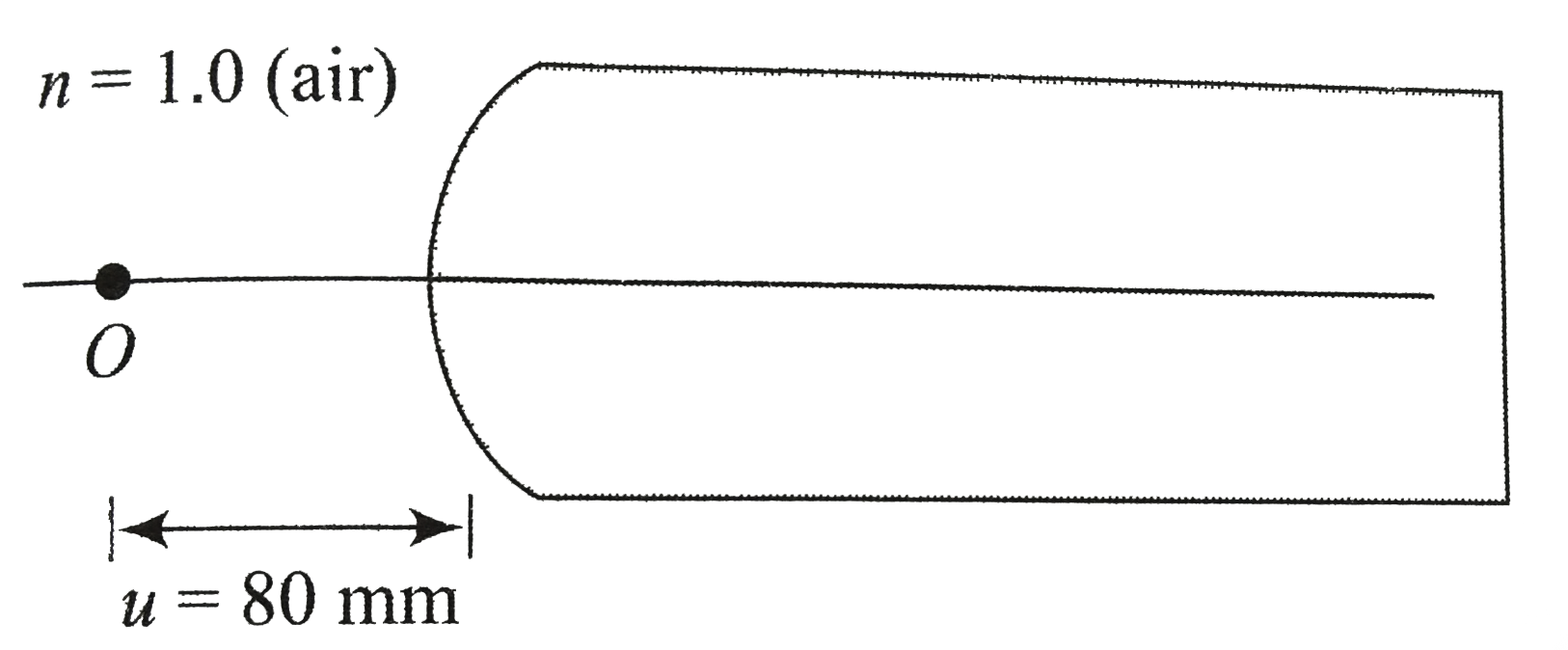
a. Find the image distance of a point object on the axis of the rod, 80mm to the left of the vertex. The rod is in air.
b. Let the same rod be immersed in water of refractive index `4//3` , the other quantities having the same values as before. Find the image distance.
View SolutionA lens is 5cm thick and the radii of curvature of its object is placed at a distance of 12cm from the surface whose radius of curvature is 10cm. How far beyond the other surface is the image formed?
View SolutionA spherical surface of radius R ssparates two media of refractive indices `mu_(1)` and `mu_(1)` as shown in figure., Where should an object be placed in medium 1 so that a real image is formed in medium 2 at the same distance?
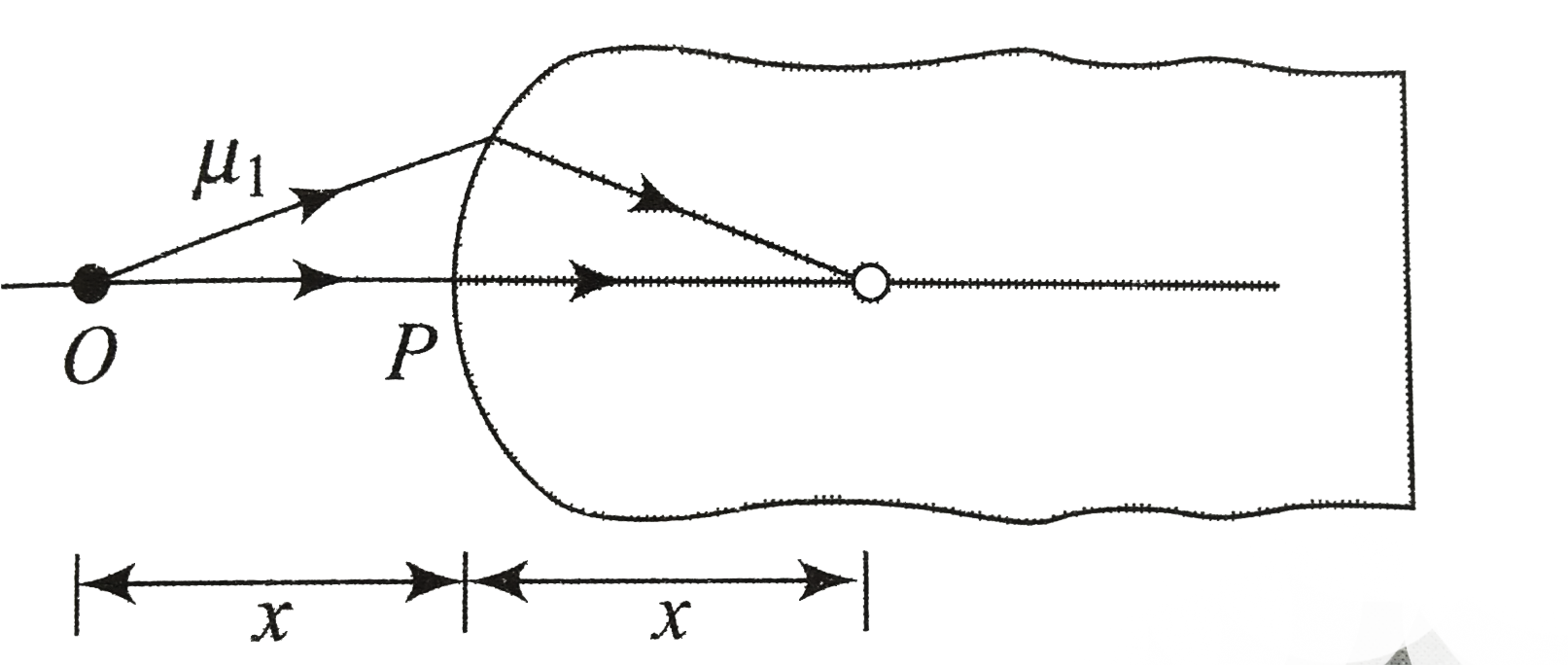
View SolutionA sphere of radius R made of material of refractive index `mu_(2)` is placed in a medium of refractive index `mu_(1)`. Where would an object be placed so that a real image is formed at equidistant fromk the sphere? ltbgt
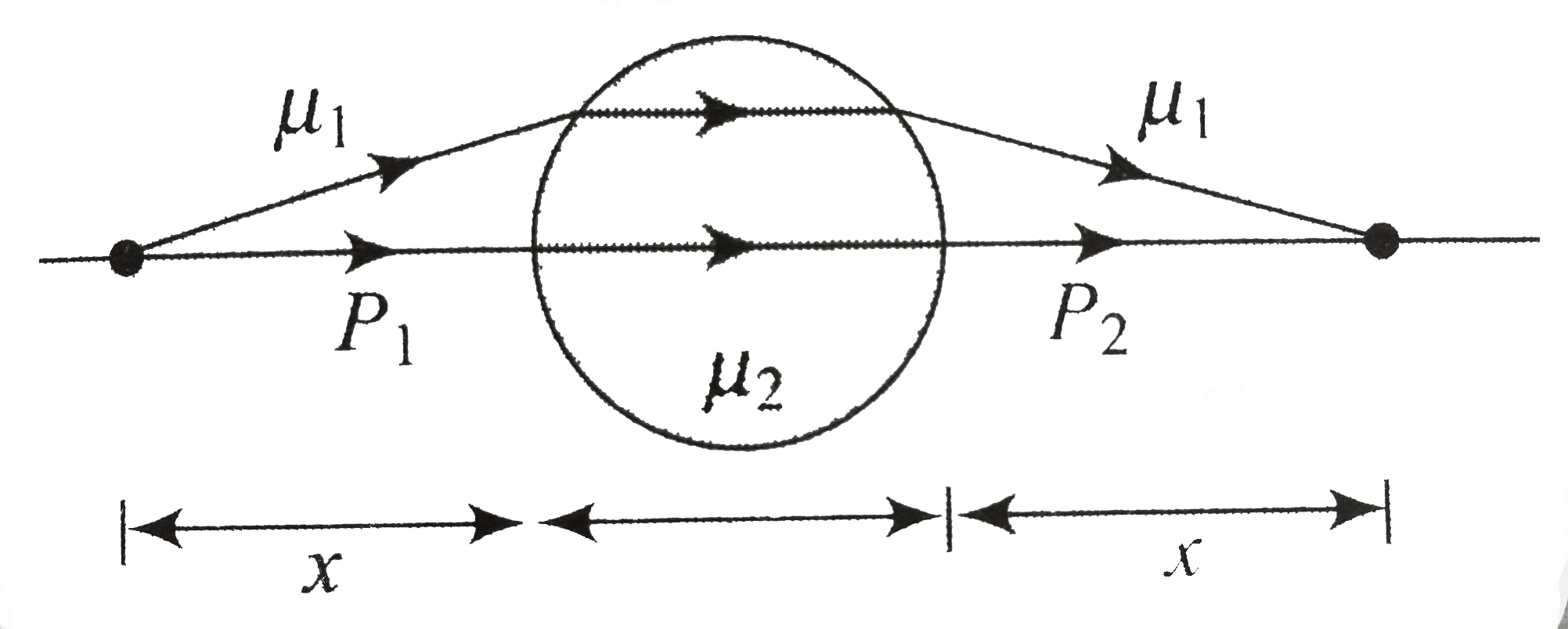
View SolutionA small object of height `0.5` cm is placed in front of a convex surface of glass `(mu-1.5)` of radius of curvature 10cm. Find the height of the image formed in glass.
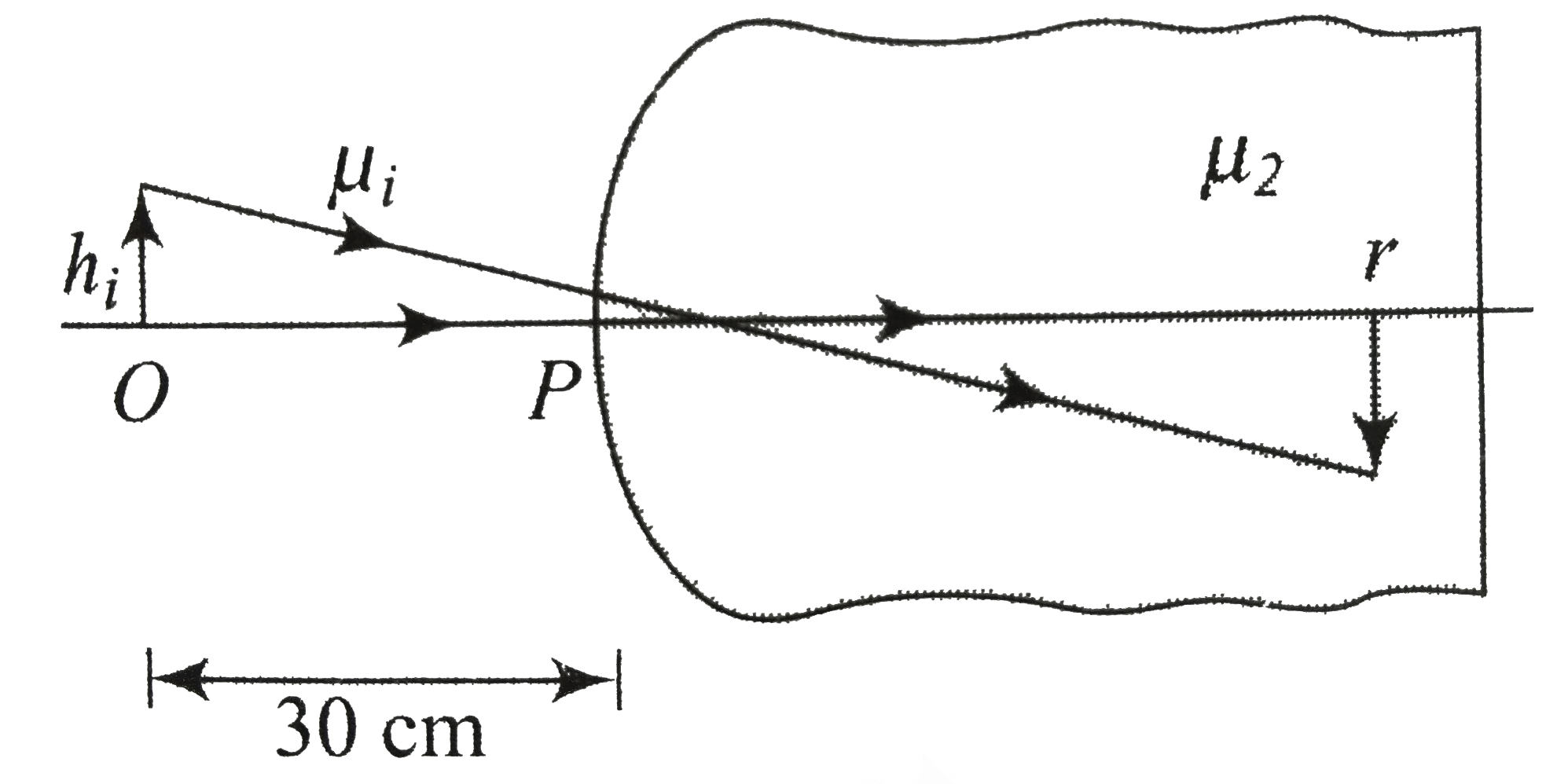
View SolutionAn object of height 1mm is placed inside a sphere of refractive index `mu=2` and radius of curvature 20 cm as shown in the figure. Find the position, size, and nature of image, for the situation shown in Figure. Draw ray diagram.

View SolutionA ray of light falls on a transparent sphere with centre at C as shown in figure. The ray emerges from the sphere parallel to line AB. The refractive index of the sphere is
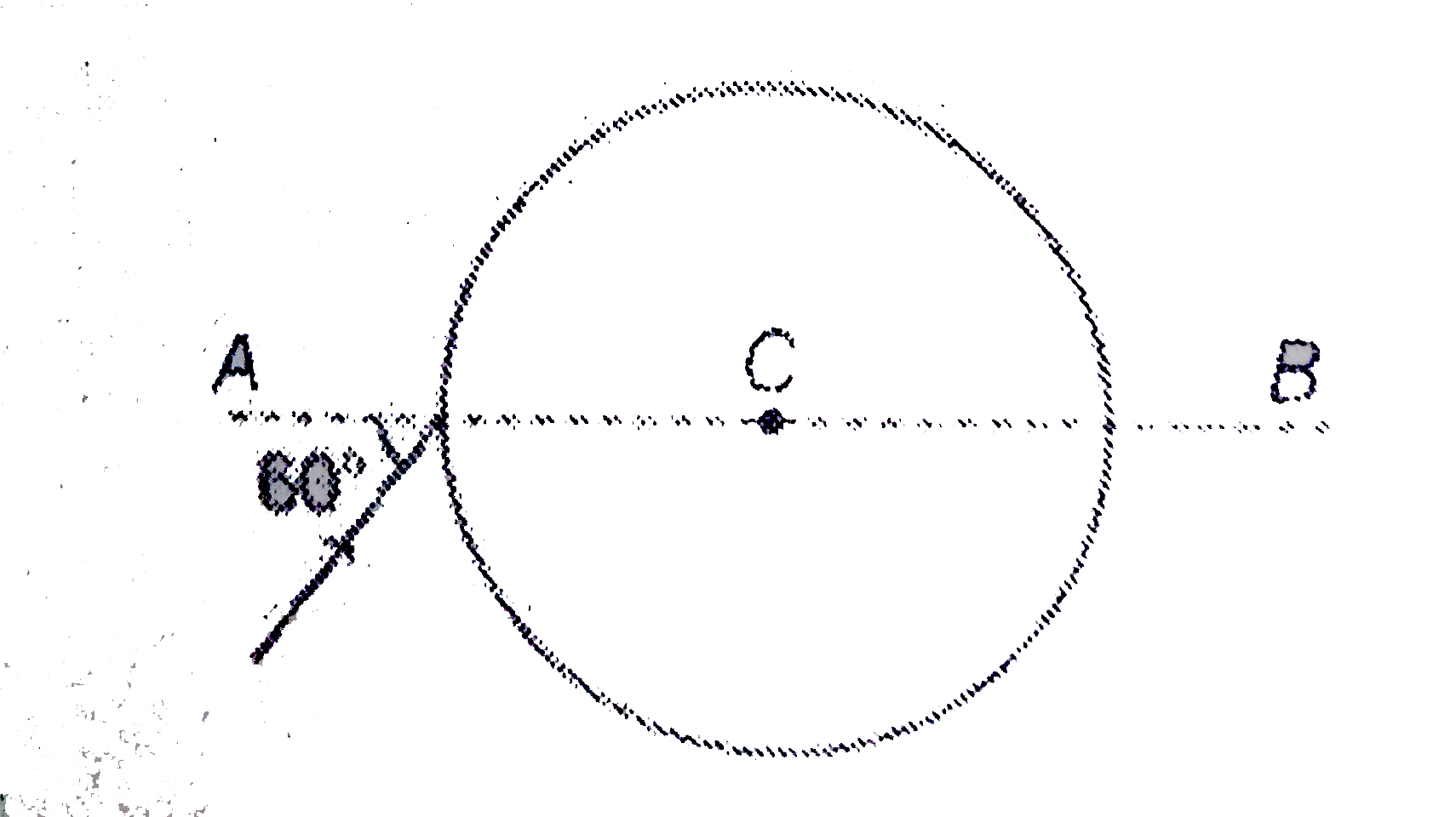
View SolutionA glass sphere, refractive index 1.5 and radius 10cm, has a spherical cavity of radius 5cm concentric with it. A narrow beam of parallel light is directed into the sphere. Find the final image and its nature.
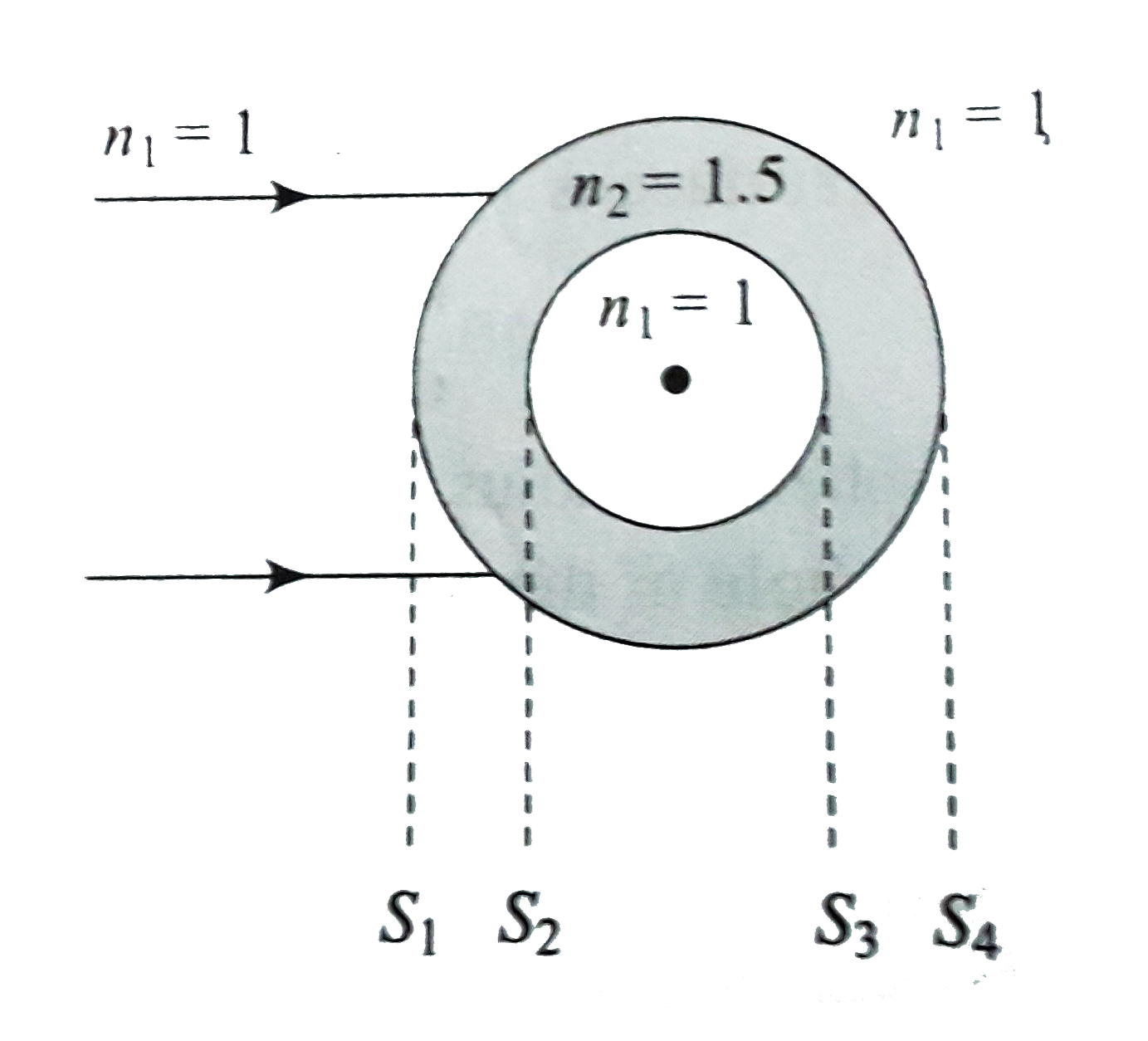
View SolutionOne end of a horizontal cylindrical glass rod `(mu=1.5)` of radius `0.5 cm` is rounded in the shape of a hemisphere. An object `0.5mm` high is placed perpendicular to the axis of the rod at a distance of `20.0cm` from the rounded edge. Locate the image of the object and find its height`
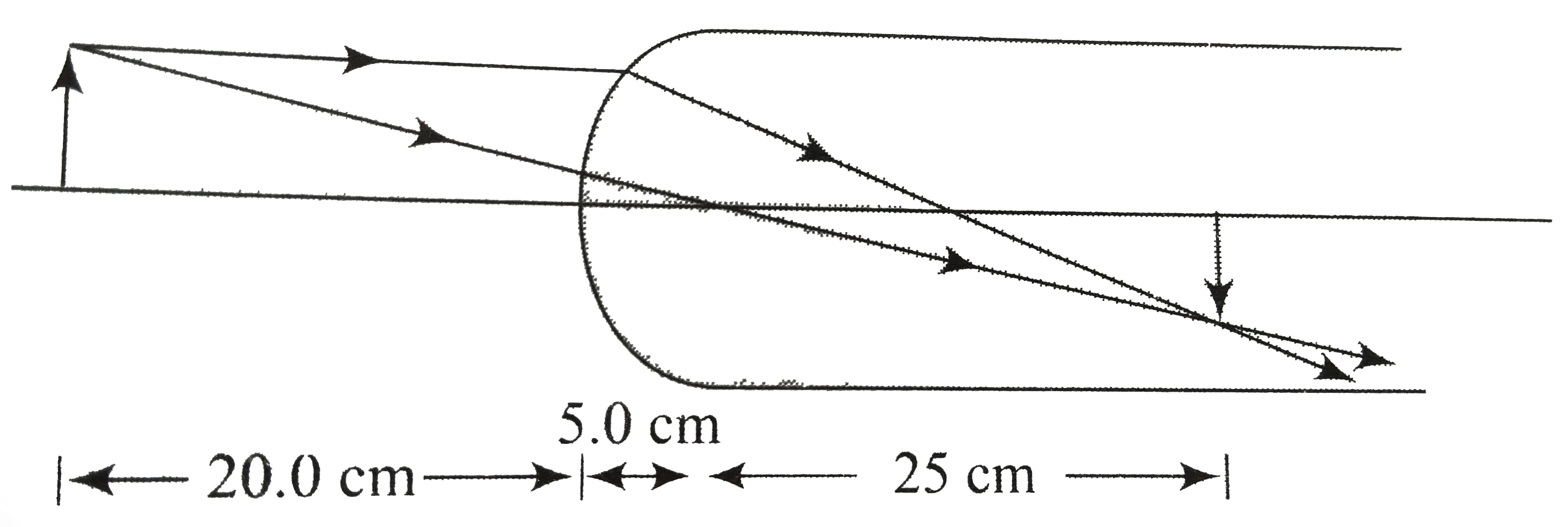
View SolutionThere is a small air bubble inside a glass sphere `(mu=1.5)` of radius 10 cm. The bubble is `4.0cm` below the surface and is viewd normally from the outside. Find the apparent dipth of the bubble.
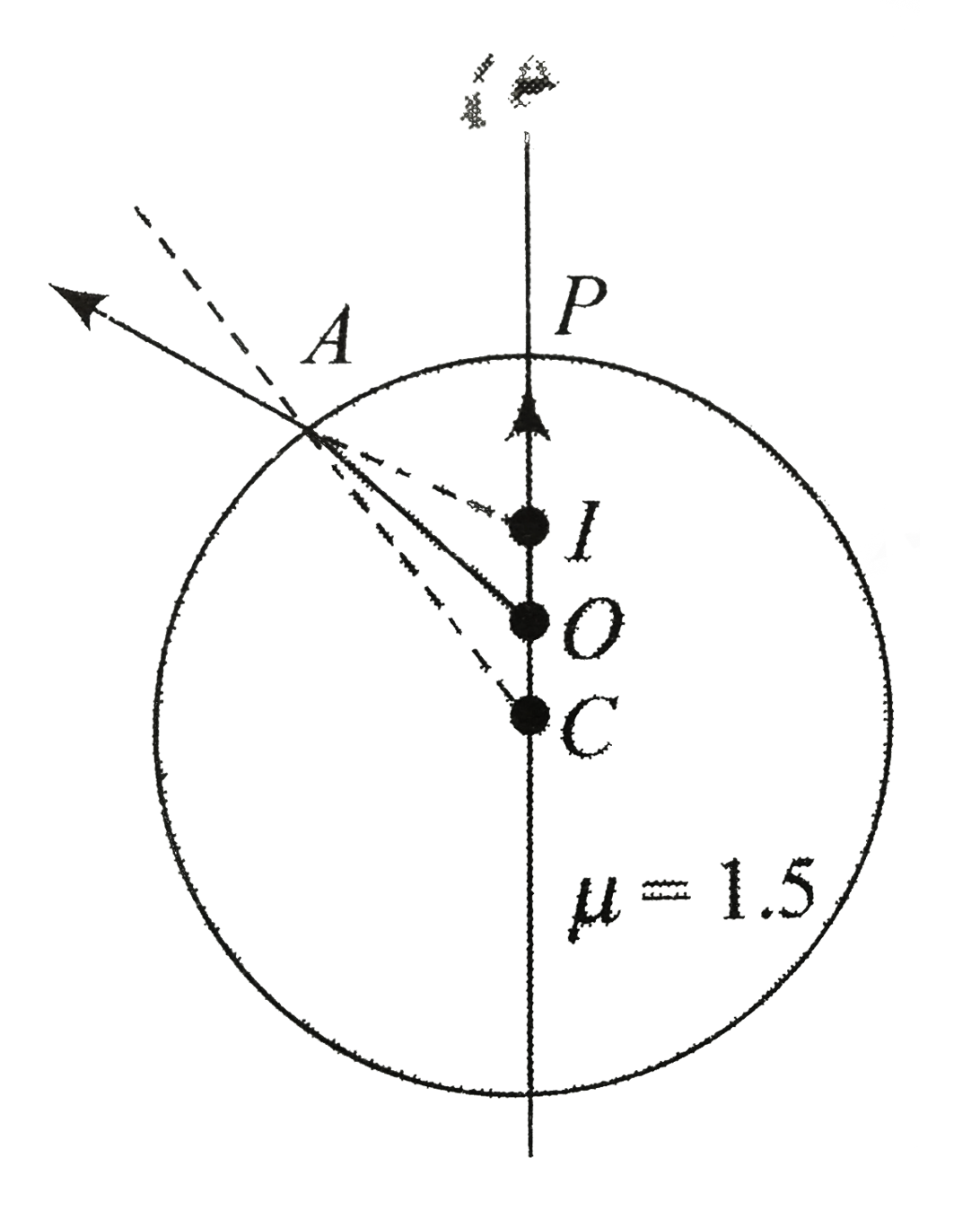
View SolutionFigure shows a transparent hemisphere of radius 3'0 cm made of a material of refractive index 2.0. (a) A narrow beam of parallel rays is incident on the hemisphere as shown in the figure. Are the rays totally reflected at the plane surface ? (b) Find the image formed by the refraction at the first surface. (c) Find the image formed by the reflection or by the refraction at the plane surface. (d) Trace qualitatively the final rays as they come out of the hemisphere.

View SolutionA small object is embedded in a glass sphere `(mu-1.5)` of radius `5.0cm` left to the center. Locate the image of the object as seen by an observer standing (a) to the left of the sphere and (b) to the right of the sphere.
View SolutionA paperweight in the form of a hemisphere of radius 3 cm is used to hold down a printed page (plain surface down ). An observer looks at the page vertically through the paperweight. At what height above the page will the printed letters near the center appear to the observer?
View SolutionSolve the previous problem if the paperweight is inverted at its palce so that the spherical surface touches the paper.
View SolutionA spherical surface of radius 30cm separates two transparent media A and B with refractive indiecs `1.33` and `1.48` , respectively. The medium A is on the convex side of the surface. Where should a point object the placed in medium A so that the paraxial rays become parallel after refraction at the surface?
View SolutionA point object is above the principal axis in the concave side of a spherical interface separating medium 1 from medium 2. I f the object is in medium 1 and `mu_(1) gt mu_(2)`, determine the position of the image by ray tracing.
View SolutionA solid hemispherical bowl of radius R, made of glass, is placed on a flat horizontal surface with its curved surface on the ground. A small object is placed under the hemisphere at the center of the curved surface. If an observer sees the object directly above the plane surface, Where will the object appear to be ?
View SolutionA small air bubble in a sphere of glass with radius 4 cm appears to be 1 cm from the surface when observed along a diameter. Find the true positino of the air bubble.
View SolutionA horizontal ray of light is incident on a solid glass sphere of radius R and refractive index `mu` . What is net deviation of the beam when it emerged from the other side of the sphere?
View SolutionA converging bundle of rays travel from water (refractive index `4//3` ) to glass (refractive index 1.5) through a convex interface of radius 16cm. In the absence of the interface, The rays would have converged to a point 32 cm from the pole of the interface. Where will the rays actually meet after refraction?
View SolutionA parallel incident beam falls on a solid glass sphere at normal incidenc. Prove that the distance of the fianll image after two refractions is at a distance `(2-mu)//2(mu-1)a` from the outer edge of the sphere. Refractive index of the sphere is `mu` and radius of the sphere is a.
View Solution
Exercise1.5 questions and complete solutions for chapter GEOMETRICAL OPTICS of CENGAGE PHYSICS (HINGLISH) of Class 12